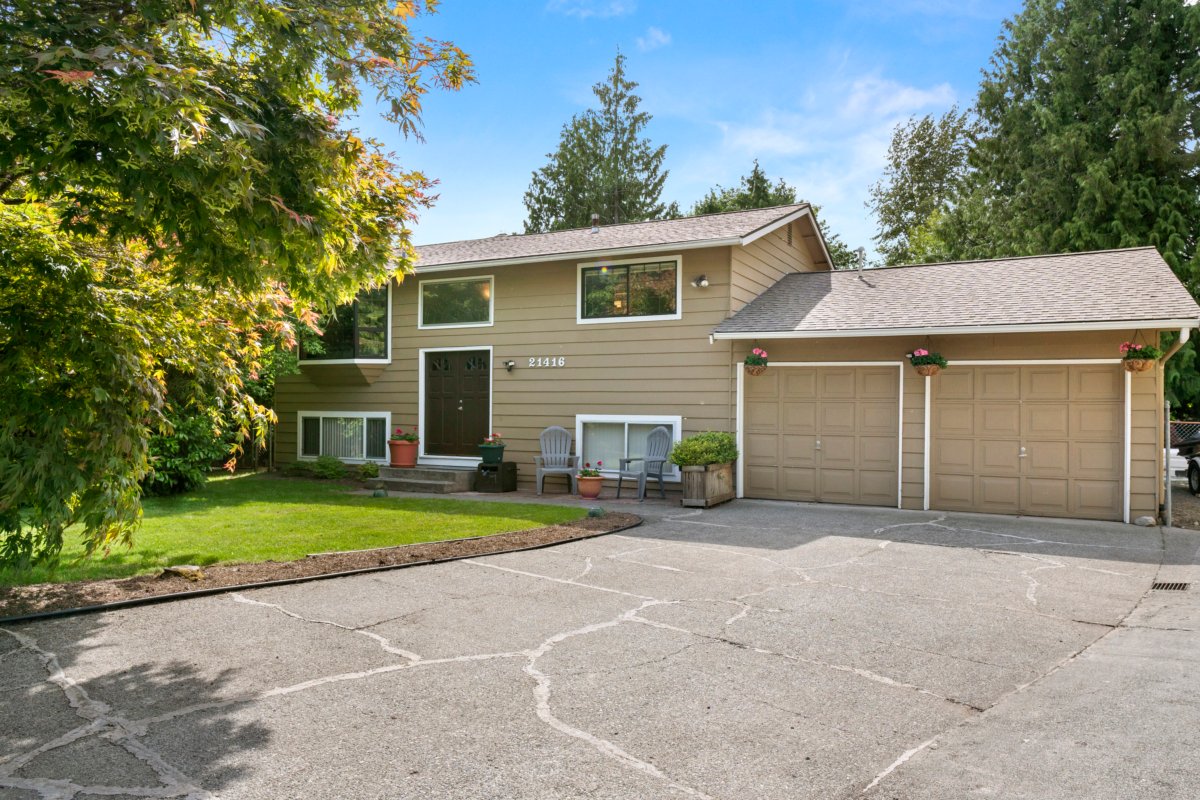
Building a Successful Real Estate Photography Business: From Startup to Success
Real Estate Photography is a specialized field that has become increasingly important in the modern real estate industry. As buyers and sellers alike continue to rely more on online platforms and digital marketing to showcase properties, the role of professional real estate photographers has become essential. These skilled individuals capture the beauty and unique features of a property, helping to create a visually compelling presentation that can make all the difference in attracting potential buyers and closing deals.
Establishing a Strong Foundation

Real Estate Photography
Before delving into the specifics of building a successful real estate photography business, it’s crucial to establish a strong foundation. This involves understanding the market, identifying your unique value proposition, and developing a comprehensive business plan.
Assessing the Local Real Estate Market
The first step in building a successful real estate photography business is to thoroughly understand the local real estate market. Research the current trends, competition, and the specific needs of real estate agents and homeowners in your area. This knowledge will help you tailor your services and pricing to meet the demands of your target clientele.
Begin by analyzing the local real estate market data, such as the number of home sales, average property values, and the typical timeline for listings. Familiarize yourself with the most popular real estate platforms and websites used by buyers and sellers in your region. This information will guide you in determining the most effective marketing channels and the type of visual content that resonates with your potential clients.
Identifying Your Unique Value Proposition
In the competitive world of real estate photography, it’s essential to have a clear understanding of your unique value proposition. What sets your business apart from the competition? What specialized skills or services do you offer that can benefit your clients? Answering these questions will help you establish a strong brand identity and differentiate your business from others in the market.
Consider your background, training, and any specialized equipment or techniques you employ. Perhaps you have expertise in architectural photography, or you excel at capturing the emotional connections of a home through your lens. Whatever your unique strengths may be, highlight them and use them to your advantage in your marketing and client outreach efforts.
Developing a Comprehensive Business Plan
A well-crafted business plan is the foundation for any successful real estate photography venture. This document should outline your goals, strategies, and the steps you’ll take to achieve them. Your business plan should include the following key elements:
- Executive Summary: A concise overview of your business, its mission, and your unique value proposition.
- Market Analysis: A detailed assessment of the local real estate market, your target clientele, and the competitive landscape.
- Services and Pricing: A clear description of the specific services you offer, along with your pricing structure.
- Marketing and Promotional Strategies: A detailed plan for how you will attract and retain clients, including your branding, advertising, and networking efforts.
- Financial Projections: Detailed financial projections, including startup costs, ongoing expenses, and revenue forecasts.
- Operations and Management: An outline of your operational procedures, equipment needs, and the roles and responsibilities of your team (if applicable).
By taking the time to develop a comprehensive business plan, you’ll be well-equipped to navigate the challenges and opportunities that come with running a successful real estate photography business.
Investing in the Right Equipment and Workflow

Real Estate Photography
Equipping your real estate photography business with the appropriate gear and developing an efficient workflow are crucial to delivering high-quality results and maintaining a competitive edge.
Choosing the Right Camera Gear
The camera equipment you select will have a significant impact on the quality of your real estate photographs. While it’s tempting to focus solely on the latest and most expensive gear, it’s important to strike a balance between quality and cost-effectiveness.
Consider investing in a professional-grade DSLR or mirrorless camera with features that cater to the needs of real estate photography, such as a wide dynamic range, high-resolution sensor, and the ability to capture sharp, detailed images. Pair your camera with a set of high-quality lenses that can handle wide-angle shots, interior spaces, and exterior scenes with ease.
In addition to your camera and lenses, you may also want to consider investing in a sturdy tripod, remote shutter release, and lighting equipment (such as strobes or continuous lighting) to ensure consistent and professional-looking results.
Developing an Efficient Workflow
Streamlining your workflow is crucial for maintaining productivity and delivering client projects on time. Establish a consistent process for shooting, editing, and delivering your real estate photography services.
Start by creating a pre-shoot checklist to ensure you have all the necessary gear and equipment ready to go. This can include items like spare batteries, memory cards, and any specialized accessories you may need.
During the shoot, experiment with various camera settings, vantage points, and lighting techniques to capture the best possible images. Utilize editing software, such as Adobe Lightroom or Photoshop, to enhance the visual appeal of your photographs, address any technical issues, and ensure a consistent look and feel across your portfolio.
Finally, develop a system for efficiently organizing, storing, and delivering your final images to clients. Consider using cloud-based storage solutions or client-facing platforms that allow for easy file sharing and client communication.
Staying Up-to-Date with Industry Trends and Technologies
The real estate photography industry is constantly evolving, with new technologies and best practices emerging on a regular basis. To maintain a competitive edge, it’s essential to stay informed and adapt to these changes.
Regularly attend industry events, workshops, and webinars to learn about the latest camera gear, editing techniques, and marketing strategies. Follow prominent real estate photography blogs and social media accounts to stay abreast of the latest trends and innovations.
Additionally, consider investing in ongoing training and professional development opportunities to hone your skills and expand your knowledge. This can include taking photography courses, attending workshops on lighting and composition, or learning about the latest post-processing techniques.
By continually investing in your equipment, workflow, and professional development, you’ll be better equipped to deliver high-quality, consistent results that meet the evolving needs of your real estate clients.
Mastering the Art of Real Estate Photography

Real Estate Photography
Capturing stunning real estate photographs requires a unique set of skills and techniques. Mastering the art of real estate photography involves understanding the specific requirements of the industry, as well as developing a keen eye for composition, lighting, and storytelling.
Understanding the Unique Needs of Real Estate Photography
Real estate photography differs from traditional portrait or landscape photography in several key ways. The primary goal is to showcase the property in the most visually appealing and informative manner possible, highlighting its key features and functionality.
Real estate photographs must be technically proficient, with a focus on sharp, well-lit images that accurately represent the size, layout, and overall aesthetic of the property. Additionally, these photographs must be able to convey the emotional and aspirational elements of a home, helping potential buyers envision themselves living in the space.
Perfecting Your Compositional Techniques
Composition is a crucial element of real estate photography. The way you frame and arrange the elements within the frame can significantly impact the viewer’s perception of the property.
When photographing interior spaces, utilize wide-angle lenses to capture the full breadth of a room, while strategically positioning furniture, decor, and other elements to create a visually balanced and appealing composition. Pay close attention to the placement of lines, shapes, and leading lines that can guide the viewer’s eye through the frame.
For exterior shots, consider the overall landscape and architectural features of the property. Use techniques like leading lines, symmetry, and framing to draw the viewer’s attention to the home’s most notable attributes.
Mastering Lighting Techniques
Proper lighting is essential for capturing high-quality real estate photographs. Poorly lit images can make a property appear dull, uninviting, and lacking in detail.
Experiment with a combination of natural and artificial lighting to achieve the desired effect. Utilize reflectors, diffusers, and strategically placed lamps or strobes to enhance the brightness and clarity of your images. Pay close attention to the direction and color temperature of the lighting, as well as any potential shadows or hot spots that could distract from the overall composition.
In some cases, you may need to employ advanced lighting techniques, such as high dynamic range (HDR) photography or flash-blending, to ensure that both the interior and exterior of the property are properly exposed and visually appealing.
Telling a Compelling Visual Story
Real estate photography is not just about capturing static images of a property; it’s about telling a compelling visual story that resonates with potential buyers. This involves incorporating elements that evoke emotion, highlight the lifestyle aspects of the home, and showcase the property’s unique features and functionality.
Consider incorporating lifestyle elements, such as people enjoying the outdoor space or relaxing in the living room, to help viewers imagine themselves living in the home. Pay attention to the small details, such as carefully styled vignettes or the placement of decor, that can add depth and character to your images.
Additionally, experiment with different shooting angles and perspectives to provide a comprehensive visual tour of the property. This may include wide-angle shots of the exterior, detailed close-ups of architectural elements, or creative perspectives that showcase the flow and functionality of the interior spaces.
By mastering the art of real estate photography, you’ll be able to create visually stunning and compelling images that help your clients stand out in a crowded market and attract the attention of potential buyers.
Developing a Robust Marketing and Branding Strategy
Attracting and retaining clients is essential for the success of any real estate photography business. Developing a robust marketing and branding strategy can help you establish a strong presence in your local market and differentiate your services from the competition.
Crafting a Compelling Brand Identity
Your brand identity is the visual and emotional representation of your real estate photography business. It’s what sets you apart from other service providers and helps potential clients recognize and remember your work.
Start by defining your brand’s core values, personality, and unique selling proposition. This will inform the visual elements of your brand, such as your logo, color palette, and overall aesthetic.
Invest in creating a professional-looking website that showcases your portfolio, services, and brand identity. Ensure that your website is user-friendly, mobile-responsive, and optimized for search engines to improve its visibility online.
Leveraging Social Media to Showcase Your Work
In today’s digital landscape, social media platforms have become essential tools for real estate photographers to showcase their work and connect with potential clients.
Maintain an active presence on platforms like Instagram, Facebook, and LinkedIn, where you can share your best real estate photographs, behind-the-scenes glimpses of your process, and engage with your followers. Use relevant hashtags, geotags, and targeted advertising to increase your visibility and reach within your local real estate community.
Remember to consistently post high-quality, visually-appealing content that reflects your brand’s unique style and personality. Engage with your followers by responding to comments, asking questions, and sharing relevant industry insights.
Networking and Building Relationships
Building strong relationships with real estate agents, brokers, and other industry professionals is crucial for the success of your real estate photography business.
Attend local real estate events, conferences, and networking sessions to introduce yourself and your services. Offer to provide complimentary photo sessions or discounts to help establish trust and demonstrate the value you can bring to their business.
Additionally, consider collaborating with other real estate-related service providers, such as home stagers or interior designers, to cross-promote your services and gain access to their client networks.
Implementing Effective Outreach and Lead Generation Strategies
Proactive outreach and lead generation efforts are essential for attracting new clients and maintaining a steady stream of business.
Develop a comprehensive email marketing strategy, where you can showcase your portfolio, share industry insights, and highlight any special offers or promotions. Regularly reach out to past clients to inquire about potential referrals or repeat business.
Leverage online directories and real estate-specific platforms to ensure your business is listed and easily discoverable by potential clients. Participate in relevant online forums and discussion groups to establish yourself as an industry expert and build trust with your target audience.
By implementing a robust marketing and branding strategy, you’ll be able to effectively promote your real estate photography services, attract a loyal client base, and position your business for long-term success.
Providing Exceptional Client Service and Experiences
In the competitive world of real estate photography, exceptional client service and experiences can be the key differentiator that sets your business apart from the competition.
Understanding and Exceeding Client Expectations
Developing a deep understanding of your clients’ needs and expectations is crucial for delivering a positive and memorable experience. Take the time to listen to their concerns, understand their specific requirements, and tailor your services accordingly.
Be responsive and proactive in your communication, keeping clients informed throughout the process and addressing any questions or concerns they may have. Ensure that you deliver your final products on time and in line with the agreed-upon specifications.
Offering Value-Added Services and Customized Solutions
Go beyond the basic real estate photography services and consider offering additional value-added offerings that can enhance the overall client experience.
This may include providing virtual staging or 3D tours, creating custom marketing materials (such as flyers or social media content), or offering post-shoot consultations to help clients maximize the impact of their visual assets.
By demonstrating your willingness to go the extra mile and provide customized solutions, you’ll not only exceed your clients’ expectations but also increase the perceived value of your services.
Fostering Long-Term Relationships and Repeat Business
Cultivating long-term relationships with your real estate clients is essential for the growth and sustainability of your business. Strive to provide a consistently excellent experience that leaves a lasting impression and encourages repeat business and referrals.
Stay in touch with your clients, even after the completion of a project, by sending periodic updates, newsletters, or personalized notes. Be proactive in offering additional services or suggesting ways to enhance their existing visual assets.
By prioritizing exceptional client service and fostering strong, lasting relationships, you’ll not only secure a steady stream of repeat business but also benefit from valuable word-of-mouth referrals that can help expand your client base.
Conclusion
Building a successful real estate photography business requires a multifaceted approach that combines technical expertise, strategic planning, and a relentless focus on client satisfaction. By establishing a strong foundation, investing in the right equipment and workflow, mastering the art of real estate photography, and developing a robust marketing and branding strategy, you’ll be well-positioned to capitalize on the growing demand for high-quality visual content in the real estate industry.
Remember, the key to long-term success lies in your ability to continuously adapt to the evolving needs of your clients, stay informed about industry trends and technologies, and provide an exceptional level of service that sets your business apart from the competition. With dedication, creativity, and a passion for your craft, you can transform your real estate photography business into a thriving enterprise that delivers tangible results for your clients and positions you as a leader in your local market.
Contact me for the best real estate photo editing service.






